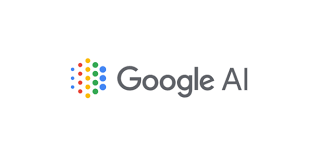In the ever-evolving digital landscape, AI-generated content is becoming increasingly prevalent. As marketers and SEO professionals, it is crucial to understand how search engines like Google handle this type of content. In this article, we will explore Google’s approach to handling AI-generated content and the role of quality control in the process.
Introduction to Googlebot Webpage Rendering
Before delving into how Google deals with AI-generated content, let’s first understand the process of webpage rendering. Webpage rendering involves creating a webpage in a browser by downloading and assembling various elements such as HTML, images, CSS, and JavaScript. Google’s crawler, Googlebot, follows a similar process by downloading these elements to render webpages.
How Google Handles AI Generated Content
During a webinar hosted by Duda, Google’s Martin Splitt shed light on how Google handles AI-generated content and the impact it has on crawling and rendering. One audience member raised a question regarding the potential need for simplifying rendering processes due to the increase in AI content.
Martin Splitt responded by explaining that Google doesn’t need to introduce any special processes to handle AI content. He emphasized that Google already implements quality detection or quality control at multiple stages, which includes identifying low-quality content even before rendering. If a webpage is deemed low-quality, there is no need for rendering, as it wouldn’t provide any value. This quality detection applies to both human-generated and AI-generated content.
According to Martin Splitt, Google’s approach is to skip rendering for pages that are already identified as low-quality. For example, if a webpage is filled with irrelevant or nonsensical content, the rendering process is unnecessary. On the other hand, if a page is empty or lacks sufficient information, Google may attempt to render it. However, if the rendering process returns poor content quality, Google acknowledges it as low-quality. Therefore, rendering is not the root cause of handling AI-generated content.
Understanding Quality Detection and AI Content
It is worth noting that Google’s quality detection algorithms are not specifically designed to detect AI-generated content. However, they have demonstrated the ability to identify low-quality machine-generated content. One particular algorithm, known as the Helpful Content algorithm, focuses on finding content that is written by people. Interestingly, it has also proved effective in detecting low-quality AI-generated content.
The Helpful Content algorithm aims to improve search results by prioritizing content that is genuinely helpful to users. In an article by Danny Sullivan, Google’s Public Liaison for Search, he emphasizes the importance of providing helpful content made by and for people. Although the algorithm primarily focuses on human-generated content, it has inadvertently become proficient at identifying low-quality AI-generated content.
In a research paper titled “Generative Models are Unsupervised Predictors of Page Quality: A Colossal-Scale Study,” the authors highlight the effectiveness of detectors trained to discriminate between human-written and machine-written text. These detectors have proven to be accurate predictors of language quality on webpages, surpassing baseline supervised spam classifiers.
The Role of Quality Control in AI Content
Martin Splitt’s insights indicate that Google already has mechanisms in place to handle AI-generated content effectively. The existing quality control measures are not limited to AI content but apply to all types of content. This suggests that Google’s algorithms are continuously evolving to identify and prioritize high-quality content, regardless of its origin.
As AI-generated content continues to rise, it is essential for marketers and SEO professionals to focus on delivering valuable and relevant content. By adhering to quality guidelines and creating content that meets user expectations, you can ensure that your AI-generated content receives the recognition it deserves from search engines like Google.
Conclusion
Google’s approach to handling AI-generated content is rooted in its commitment to quality control. Through a combination of quality detection algorithms and the rendering process, Google strives to prioritize and deliver helpful content to its users. While rendering plays a role in the overall process, it is not the primary focus when it comes to handling AI-generated content.
As we navigate the digital landscape, it is crucial to stay up-to-date with Google’s evolving algorithms and guidelines. By understanding how search engines handle AI-generated content, marketers and SEO professionals can optimize their strategies and create content that aligns with Google’s quality standards.
Remember, the key to success lies in providing valuable and relevant content, whether it is generated by humans or AI. By prioritizing quality and meeting user expectations, you can position your content for success in a world driven by algorithms.

No comments! Be the first commenter?